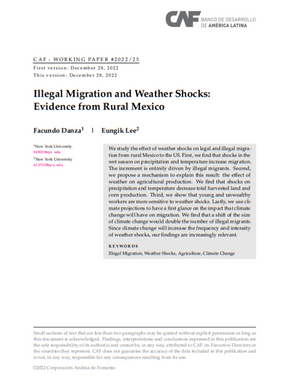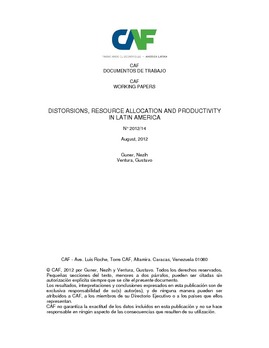Mostrar el registro sencillo del ítem
Agricultural Distortions and International Migration
| dc.contributor.author | Britos, Braulio | |
| dc.contributor.author | Hernandez, Manuel A. | |
| dc.contributor.author | Trupkin, Danilo R. | |
| dc.coverage.spatial | Guatemala | es_ES |
| dc.coverage.spatial | América Latina y el Caribe | |
| dc.date.accessioned | 2025-08-20T22:28:33Z | |
| dc.date.available | 2025-08-20T22:28:33Z | |
| dc.date.issued | 2025-07-31 | |
| dc.identifier.citation | Britos, B., Hernandez, M. A., & Trupkin, D. R. (2025, July 31). Agricultural Distortions and International Migration. Retrieved from https://scioteca.caf.com/handle/123456789/2502 | en_GB |
| dc.identifier.uri | https://scioteca.caf.com/handle/123456789/2502 | |
| dc.description.tableofcontents | International migration is a recurrent phenomenon that has grown rapidly over the past two decades. This paper examines the role of agricultural distortions in shaping emigration patterns and influencing productivity and welfare in developing countries, using Guatemala as a case study. We develop a theoretical framework where household members can work in agriculture, non-agriculture, or emigrate, and calibrate the model combining detailed micro and aggregate data. Our model identifies two key channels through which agricultural distortions affect migration and productivity: a first channel where distortions increase emigration among more productive agents, reducing aggregate productivity, and a second channel where distortions drive factor misallocation, lowering incomes and increasing overall emigration. | es_ES |
| dc.language.iso | en | es_ES |
| dc.subject | Agricultura | es_ES |
| dc.subject | Migración | |
| dc.title | Agricultural Distortions and International Migration | es_ES |
| dc.type | workingPaper | es_ES |
Ficheros en el ítem
Este ítem aparece en la(s) siguiente(s) colección(ones)
-
6.1 Documentos de trabajo en investigación socioeconómica
En esta colección se encuentran los documentos de trabajo sobre temas económicos y sociales prioritarios para la región.



